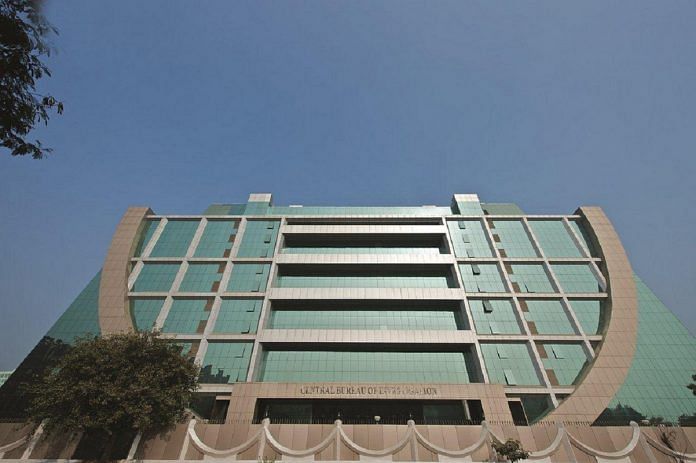Having hit many dead ends, the CBI found alleged rapist Anil Kumar through a procedure called lineage testing, used for the first time in India.
New Delhi: It was a chromosome extracted from the vaginal discharge of the girl who was raped and murdered in Himachal Pradesh’s Kotkhai on 6 July 2017 that finally led investigators to the clan of the alleged rapist in Kangra, and eventually, to the man himself.
The chromosome was extracted through a procedure called lineage testing, used in India for the first time.
Debunking the investigation by state police, the Central Bureau of Investigation (CBI) alleged Wednesday that Anil Kumar, a woodcutter, was responsible for the rape and murder of the girl, and that the five suspects arrested by the Himachal Police had no connection to the case, as their DNA samples did not match the profile of the rapist.
The victim had reportedly left from her school in the Bankuffar area around 4.30 pm for home. As she crossed the Halaila forests, she was accosted by the suspect who raped and killed her.
ThePrint spoke to several forensics experts to understanding what is lineage testing, and how the semen sample and chromosome helped investigators find the suspect.
What is lineage testing?
Lineage testing, also known as familial searching, is a procedure that analyses a DNA profile or sample — in this case, semen — to point to the lineage, clan, and race of a person.
The procedure is used in the US, including the states of Virginia, Colorado, Texas, California, Florida and Michigan, to produce investigative leads from biological evidence in cases of rape and murder.
According to forensics experts, the lineage test was first used in Leicestershire, UK, in 1983, when two girls were found gang raped. The investigators took the DNA of the rapist from the vaginal swabs, but it did not match with any of the suspects who were arrested.
The test was then used to identify the clan to which the accused belonged. Following that, DNA samples of over 100 males were collected from that clan to finally find the perpetrator, who was then arrested.
“The test has evolved since then. Now it has become more accurate. However, Indian agencies do not conduct it, as there is a question of consent involved. A person may not be willing to give a sample, or the magistrate may not give official orders to collect samples for an entire clan. So, it often leads to a conflict,” a forensics expert said.
How it helped crack the Kotkhai case
Extracting the chromosome
During the postmortem, the experts tested the discharge in the girl’s vagina and found the presence of semen in it. However, since the semen could not be separated from the vaginal discharge, the Y chromosome or the male chromosome was extracted from it to make the DNA profile of the rapist.
“In cases of sexual assault, evidence such as vaginal swabs contains both female and male DNA because of the physical contact of the two. In this case, the discharge had both X and Y chromosomes. In order to get the DNA of the rapist and profile it, it was important to separate the two by extracting the Y chromosome, and then analysing it,” said Abhishek Yadav, forensics expert at AIIMS.
Once the chromosome was extracted and analysed using a procedure called Y-STR, the DNA in it was amplified and a profile was made.
Identifying the family
Once the DNA profile was ready, the next challenge was to identify the suspect.
For the process, the CBI recorded statements of over 400 people and quizzed 2,000 others, and finally made a list of 250 suspects, who were regular in the plantation area where the girl’s body was found.
The blood samples of those 250 persons were then collected and matched with the DNA of the rapist, but that didn’t lead anywhere.
“Usually a profile has many loci whose pattern is then matched with that of the accused. If 14 loci match, it’s a perfect match, but if only 8 or 9 match, then it is a partial match. In this case, all 250 men had to be exonerated as there wasn’t even a partial match,” an investigator said.
Lineage testing and Y-STR analysis of the DNA was then conducted to identify the clan, race and age of the rapist.
“Every cell in our body contains DNA. It is a very long molecule that has all our genetic information. In such cases, the DNA profile, once made, can help identify the person’s ethnicity, traits, clan, and age. By looking at the DNA, one can take information from the loci and tell which clan the person belongs to and who were his ancestors,” Yadav said.
Once the test was conducted, the investigators zeroed in on a family from Kangra.
Nailing the accused
“The test helped us identify the clan to which the rapist belonged. In order to identify the man, the investigation then shifted to that village and another round of sampling was carried out. Finally, DNA sampling was done separately for paternal and maternal lineage of the clan, which then gave us the result,” a CBI officer said.
The investigation led the CBI to Anil Kumar, a 25-year-old woodcutter from the area, who was earlier arrested in a case of attempt to murder. Following his arrest, his DNA sample was matched with the profile of the rapist and it matched perfectly, an officer explained.






